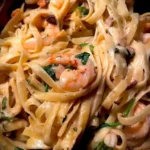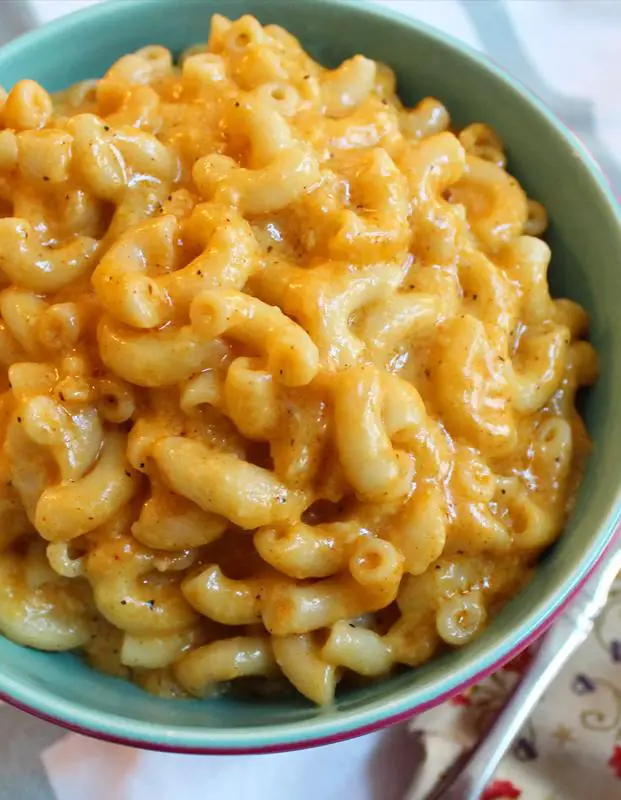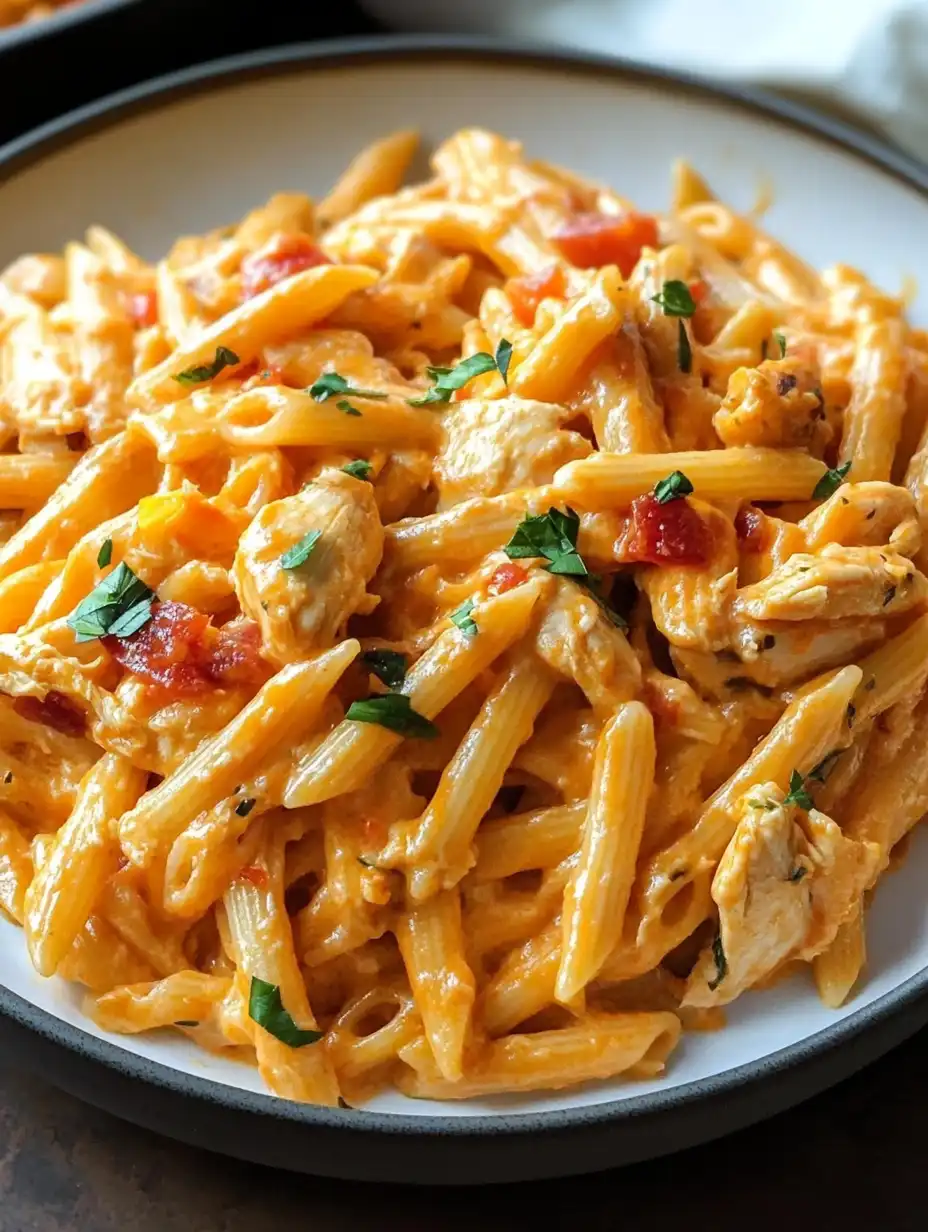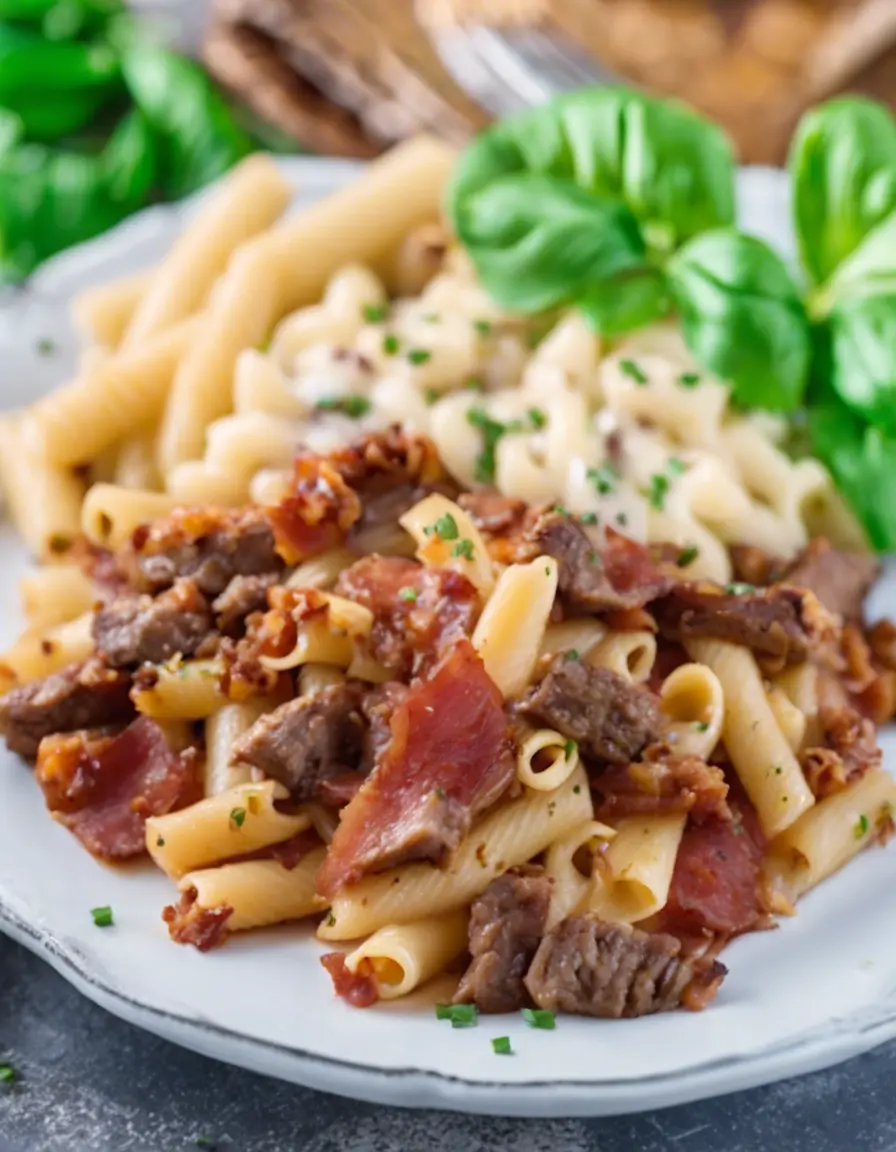One-Pot Shrimp and Spinach Pasta Recipe Looking for a quick and delicious meal that brings the freshness of the ocean and the comfort of pasta together in one easy dish? Look no further than this One-Pot Shrimp and Spinach Pasta recipe. This dish is perfect for those busy weeknights when you want something satisfying without spending hours in the kitchen
One-Pot Shrimp and Spinach Pasta Recipe
PrintOne-Pot Shrimp and Spinach Pasta Recipe
A flavorful and convenient one-pot pasta dish with succulent shrimp, fresh spinach, and cherry tomatoes in a creamy sauce.
⭐⭐⭐⭐⭐
- Prep Time: 10 minutes
- Cook Time: 15 minutes
- Total Time: 25 minutes
- Yield: 4 servings
- Category: Main Course
- Method: Stovetop
- Cuisine: Italian
Ingredients
8 oz linguine pasta
Salt and pepper, to taste
2 tablespoons olive oil
3 cloves garlic, minced
1/4 teaspoon red pepper flakes (optional)
3 cups baby spinach leaves
2 cups cherry tomatoes, halved
3 cups chicken broth
1/2 cup heavy cream
1/2 cup grated Parmesan cheese
Fresh basil leaves, for garnish
Instructions
- In a large pot or skillet, combine linguine pasta, shrimp, salt, pepper, olive oil, minced garlic, red pepper flakes (if using), spinach leaves, and cherry tomatoes.
- Pour in the chicken broth and heavy cream.
- Bring the mixture to a boil over medium-high heat.
- Reduce the heat to medium-low and let it simmer for about 10-12 minutes, stirring occasionally, until the pasta is cooked through and the sauce has thickened.
- Stir in the grated Parmesan cheese until melted and well combined.
- Remove the pot or skillet from the heat.
- Garnish with fresh basil leaves before serving.
- Serve hot and enjoy this delicious one-pot shrimp and spinach pasta!
Notes
Feel free to adjust the amount of red pepper flakes to your preferred level of spiciness.
Nutrition
- Serving Size: 1 serving
- Calories: 512
- Sugar: 3g
- Sodium: 967mg
- Fat: 22g
- Saturated Fat: 9g
- Unsaturated Fat: 11g
- Trans Fat: 0g
- Carbohydrates: 48g
- Fiber: 4g
- Protein: 31g
- Cholesterol: 234mg
Linguine Pasta:
- Provides energy: Linguine pasta is a source of carbohydrates, which are the body’s primary energy source.
- Dietary fiber: Whole wheat linguine pasta offers dietary fiber, promoting digestive health and aiding in weight management.
Shrimp:
- High in protein: Shrimp is rich in protein, essential for muscle repair and growth.
- Low in calories: Shrimp is relatively low in calories, making it a great choice for those watching their calorie intake.
- Rich in omega-3 fatty acids: Shrimp contains omega-3 fatty acids, which support heart health and reduce inflammation.
Spinach Leaves:
- Nutrient-dense: Spinach is packed with vitamins and minerals, including vitamins A, C, and K, as well as folate, iron, and magnesium.
- Antioxidant-rich: Spinach is high in antioxidants, which help protect cells from damage caused by free radicals.
- Promotes bone health: Spinach is a good source of vitamin K, important for bone health and blood clotting.
Cherry Tomatoes: – One-Pot Shrimp and Spinach Pasta Recipe
- Rich in vitamins: Cherry tomatoes are high in vitamin C and other antioxidants, supporting immune function and overall health.
- Low in calories: Cherry tomatoes are low in calories and high in water content, making them a refreshing and hydrating addition to meals.
- Contains lycopene: Cherry tomatoes contain lycopene, a powerful antioxidant associated with a reduced risk of chronic diseases like heart disease and cancer.
Olive Oil:
- Healthy fat: Olive oil is rich in monounsaturated fats, which can help lower cholesterol levels and reduce the risk of heart disease.
- Anti-inflammatory properties: Olive oil contains antioxidants and anti-inflammatory compounds that may help reduce inflammation in the body.
- Supports brain health: The monounsaturated fats in olive oil may support brain health and reduce the risk of cognitive decline.
Garlic:
- Immune support: Garlic has antimicrobial properties and contains compounds that may help support the immune system.
- Heart health: Garlic may help lower blood pressure and cholesterol levels, reducing the risk of heart disease.
- Anti-inflammatory: Garlic contains anti-inflammatory compounds that may help reduce inflammation in the body.
Chicken Broth:
- Hydration: Chicken broth is hydrating and can help replenish fluids and electrolytes in the body.
- Supports gut health: Chicken broth contains gelatin and amino acids that support gut health and digestion.
- Provides essential nutrients: Chicken broth contains vitamins, minerals, and amino acids that are beneficial for overall health and well-being.
Heavy Cream:
- Creaminess: Heavy cream adds richness and creaminess to the dish, enhancing its texture and flavor.
- Source of fat-soluble vitamins: Heavy cream is a source of fat-soluble vitamins like vitamins A, D, E, and K, which are important for various bodily functions.
- Satiation: The fat content in heavy cream helps increase feelings of fullness and satisfaction, making the meal more satisfying.
Parmesan Cheese:
- Calcium: Parmesan cheese is a good source of calcium, important for bone health and muscle function.
- Protein: Parmesan cheese provides a boost of protein, which is essential for muscle repair and growth.
- Flavor enhancer: Parmesan cheese adds a savory, salty flavor to the dish, enhancing its overall taste and appeal.
Fresh Basil Leaves:
- Antioxidants: Basil leaves contain antioxidants that help protect cells from damage and support overall health.
- Anti-inflammatory: Basil has anti-inflammatory properties that may help reduce inflammation in the body.
- Aromatic: Basil adds a fresh, aromatic flavor to the dish, enhancing its taste and aroma.
Faqs
- How does Gordon Ramsay cook shrimp?
- Gordon Ramsay often cooks shrimp by seasoning them with salt, pepper, and other herbs or spices, then sautéing them in a hot pan with olive oil or butter until they are pink and cooked through. He may also grill or roast shrimp for added flavor.
- Should I peel shrimp before cooking in pasta?
- It depends on personal preference and the recipe you’re using. Some recipes call for peeled shrimp, while others may leave the shells on for added flavor during cooking. If you prefer the convenience of not having to peel the shrimp while eating your pasta, you can peel them before cooking. However, leaving the shells on can infuse the dish with a richer shrimp flavor.
- Can you eat shrimp with pasta?
- Yes, shrimp is commonly paired with pasta in various dishes such as shrimp scampi, shrimp Alfredo, or shrimp marinara. The combination of succulent shrimp and pasta creates a delicious and satisfying meal.
- Why do you soak shrimp in milk before frying?
- Soaking shrimp in milk before frying is a technique used to tenderize the shrimp and remove any fishy taste or odor. The milk helps neutralize the fishy flavors while also adding a subtle sweetness to the shrimp. Additionally, soaking shrimp in milk can help the breading adhere better during frying, resulting in a crispier and more flavorful coating.






Leave a Comment